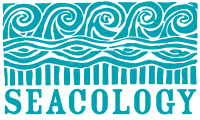About Seacology
Seacology: Protecting Island Communities and Their Natural Resources
Seacology is a non-profit organization that focuses on protecting island communities and their natural resources. The organization was founded in 1991 by Dr. Paul Alan Cox, an ethnobotanist who has spent his career studying the relationship between people and plants.
The mission of Seacology is to preserve the biodiversity of islands by working with local communities to protect their natural resources. The organization believes that the best way to achieve this goal is through partnerships with island communities, rather than imposing solutions from outside.
Why Islands?
Islands are unique ecosystems that are home to many species found nowhere else on earth. However, they are also uniquely vulnerable due to their isolation and limited resources. Island communities face constant pressure to exploit natural resources in order to survive, which can lead to environmental degradation and loss of biodiversity.
Seacology recognizes that protecting islands is not only important for preserving biodiversity but also for supporting the livelihoods of local communities who depend on these ecosystems for food, water, and other resources.
How Seacology Works
Seacology works by partnering with island communities around the world. The organization identifies areas where conservation efforts are needed and then works with local leaders to develop projects that meet both conservation goals and community needs.
Projects may include initiatives such as establishing marine protected areas or reforestation efforts. In exchange for implementing these projects, Seacology provides funding or other support such as education or healthcare services.
One key aspect of Seacology's approach is its focus on community involvement. Projects are designed in collaboration with local leaders who have a deep understanding of their community's needs and priorities. This ensures that projects are sustainable over the long term because they have buy-in from those who will be most affected by them.
Examples of Seacology Projects
Since its founding in 1991, Seacology has completed over 300 projects in more than 60 countries around the world. Here are just a few examples:
- In Fiji, Seacology worked with a village on Vanua Levu Island to establish a marine protected area (MPA) covering over 3 square miles (8 square kilometers). The MPA helps protect coral reefs from destructive fishing practices while also providing opportunities for sustainable tourism.
- In Indonesia's Raja Ampat Islands, Seacology partnered with several villages to establish MPAs covering over 100 square miles (260 square kilometers). These MPAs help protect some of the world's most biodiverse coral reefs while also providing economic benefits through ecotourism.
- In Madagascar's Nosy Be archipelago, Seacology worked with several villages to establish reforestation programs aimed at restoring degraded forests while also providing economic benefits through sustainable agriculture.
- In Mexico's Baja California Sur state, Seaclogy partnered with several fishing cooperatives to establish no-take zones within marine reserves aimed at conserving fish populations while also promoting sustainable fishing practices.
Conclusion
Seaclolgy is an innovative non-profit organization dedicated solely towards preserving island ecosystems worldwide through partnerships between locals living there & themselves without imposing any external solutions upon them which makes it unique among others working towards similar goals globally! With its focus on community involvement & sustainability measures taken into account before initiating any project; it has been able successfully complete more than three hundred such initiatives across sixty countries since inception back in nineteen ninety-one!
